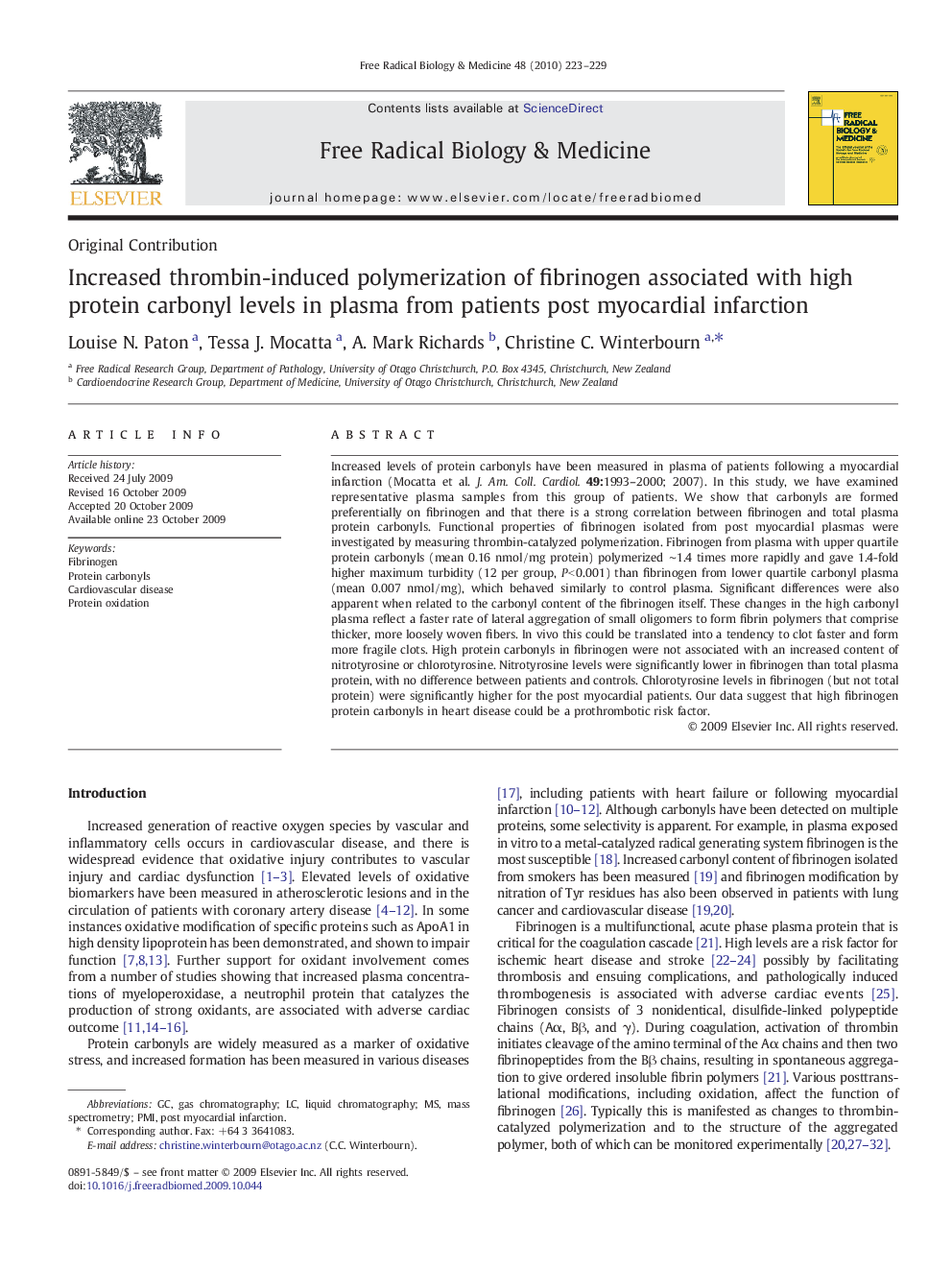| Article ID | Journal | Published Year | Pages | File Type |
|---|---|---|---|---|
| 1909532 | Free Radical Biology and Medicine | 2010 | 7 Pages |
Increased levels of protein carbonyls have been measured in plasma of patients following a myocardial infarction (Mocatta et al. J. Am. Coll. Cardiol.49:1993–2000; 2007). In this study, we have examined representative plasma samples from this group of patients. We show that carbonyls are formed preferentially on fibrinogen and that there is a strong correlation between fibrinogen and total plasma protein carbonyls. Functional properties of fibrinogen isolated from post myocardial plasmas were investigated by measuring thrombin-catalyzed polymerization. Fibrinogen from plasma with upper quartile protein carbonyls (mean 0.16 nmol/mg protein) polymerized ∼1.4 times more rapidly and gave 1.4-fold higher maximum turbidity (12 per group, P < 0.001) than fibrinogen from lower quartile carbonyl plasma (mean 0.007 nmol/mg), which behaved similarly to control plasma. Significant differences were also apparent when related to the carbonyl content of the fibrinogen itself. These changes in the high carbonyl plasma reflect a faster rate of lateral aggregation of small oligomers to form fibrin polymers that comprise thicker, more loosely woven fibers. In vivo this could be translated into a tendency to clot faster and form more fragile clots. High protein carbonyls in fibrinogen were not associated with an increased content of nitrotyrosine or chlorotyrosine. Nitrotyrosine levels were significantly lower in fibrinogen than total plasma protein, with no difference between patients and controls. Chlorotyrosine levels in fibrinogen (but not total protein) were significantly higher for the post myocardial patients. Our data suggest that high fibrinogen protein carbonyls in heart disease could be a prothrombotic risk factor.
